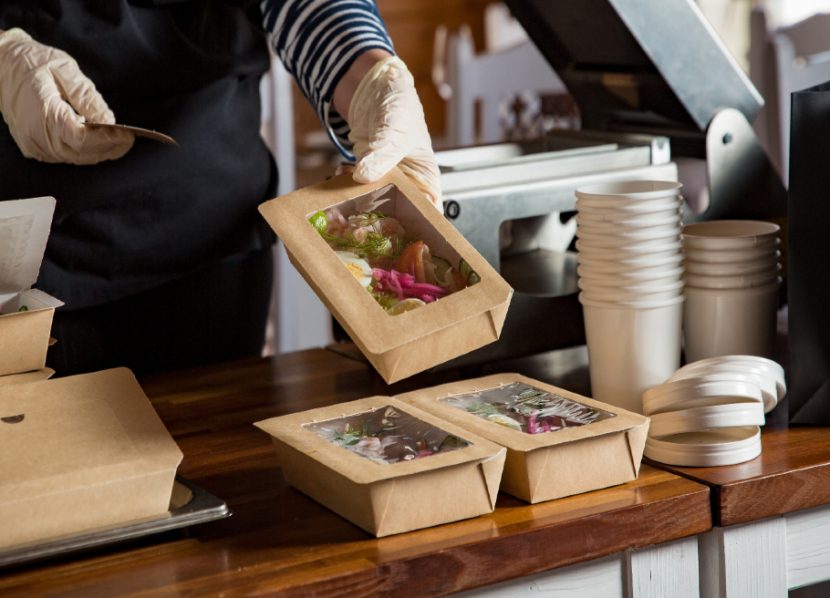Is Sustainable Packaging Food Safe?
By Maria Spinetta
The latest trend in packaging is sustainability, but does it come at the cost of contaminating the food it is meant to protect?
Sustainability trends driving packaging innovation
The packaging ecosystem is vast, and sustainable innovation encompasses multiple factors. These range from improving recyclability and the availability of recycled materials to optimizing design and processes to reduce waste. Sustainable material development – whether synthesized, upcycled or even cultivated and harvested – is another area of interest.
Developing sustainable food packaging solutions is far from straightforward and it’s not easy to deliver meaningful change. But that is what regulators and consumers are starting to demand.
Developing sustainable and safe food packaging solutions is far from straightforward and it’s not easy to deliver meaningful change. But that is what regulators and consumers are starting to demand.
Interplay between sustainability and food safety
Unless the bigger picture is considered, there is a risk that sustainable packaging innovation could solve some environmental problems whilst exacerbating others.
For instance, the interplay between food and packaging has implications for both food safety and sustainability. Packaging must be robust enough to protect food during transport and storage, forming a barrier to prevent external contamination and oxidation. In some applications, it performs the additional function of containing antimicrobial compounds which slow down spoilage and extend shelf-life. It can even eliminate the need for a product to be refrigerated, reducing the associated emissions.
Engaging with consumers is important too. As well as discovering what matters to them when buying food, it’s useful to understand how they use products and what might make it easier for them to reuse or recycle packaging.
Packaging material considerations
Naturally, any materials used in food packaging need to be food-safe, so it’s important to have full visibility of their provenance, composition, and supply chain. Food safety requirements also have repercussions for closed-loop strategies involving the reuse or recycling of materials.
In terms of single-use plastic reduction, one area generating a lot of innovation effort is the replacement of virgin petroleum-derived polymers with recycled or renewable alternatives. Use of recycled content such as rPET is becoming widespread, and bioderived materials are also attracting interest. Many organizations are embracing circular economy principles, designing out waste and keeping products and materials in use for as long as possible.
Kraft Heinz presents a great example of using biomaterials with an upcycling twist. Its Maxwell House compostable coffee pods are 85% coffee grounds, with a paper lid, a corn starch filter and a plant-based compostable ring that is 20% coffee bean husks.
Technical challenges
Recycled and alternative food packaging materials face technical challenges across three main areas: supply, functionality, and enabling circularity.
In terms of supply, there simply isn’t enough food-grade recycled material to meet the entire industry’s packaging needs at present. It’s a similar story for alternative materials.
The functionality and quality of materials is another concern, especially with mechanically recycled materials which tend to degrade over numerous cycles. However, progress is being made here. Steps can be taken to mitigate degradation, and breakthroughs in chemical recycling methods generating plastic of virgin-like quality hold much potential.
Circularity challenges largely center on end-of-life, namely the availability and consistency of recycling facilities. The infrastructure is generally good for PET bottles, but less so for other polymers, which also impacts the supply of recycled material.
Alternative materials can present additional complexities. Bioderived conventional polymers such as bioPET can enter the same recycling streams as petroleum-derived polymers. However, they result in the same pollution issues as conventional plastics when not disposed of carefully. Biodegradable and compostable materials also pose challenges. The nature and duration of biodegradability can vary hugely, and industrial composting services cannot always handle these materials. What’s more, for organizations that are committed to closed loop principles, there is still some debate over whether composting can be considered a fully circular outcome.
Sustainability and Food Safety: finding the balance
Advancements in science and technology are enabling us to evolve food packaging to meet modern needs and sustainability demands. Cross-sector learning will help drive progress too. A pharmaceutical packaging development that could have potential for the food industry is Amcor’s Multi-Chamber Blister System. It involves a cold-form laminate which can hold dry powder in one chamber and liquid in another, which enables room temperature storage and avoids the use of glass containers.
Nevertheless, right now, conventional plastics still have the edge in functional properties such as forming effective barriers to prevent spoilage. We don’t yet have all the answers and further innovation is needed to address food packaging sustainability in safe and holistic ways.
Overcoming challenges will require expertise from various disciplines including materials functionality, food science, and sustainability to ensure it doesn’t compromise the food its packaged in. New technologies, coatings, and polymers all have a role to play to ensure food safety . Manufacturing processes and novel ‘package-less’ supply models will also form part of the solution, especially because many consumers express a preference for minimal food packaging.
The coming years will be crucial, and gaps created by the challenges will eventually become opportunities. Sustainable packaging will be a great brand differentiator for food firms that act with foresight.
About the author
At Sagentia Innovation, Maria Spinetta helps global food and beverage companies with their innovation challenges, offering advisory and product development support. A multilingual food engineer with more than ten years’ experience, she has held food quality and quality assurance roles in companies such as Brioche Dorée and provided analytical and microbiological services to Mars Inc. Maria assisted food and beverage companies in shelf-life extension and process optimization with industrial gases at Linde, and she spent two years helping companies switch to compostable packaging with Vegware.

-
 FeaturedRisk management
The Cost of a Breach: What a Cyberattack Could Mean for Food Safety Recalls
FeaturedRisk management
The Cost of a Breach: What a Cyberattack Could Mean for Food Safety Recalls
-
 FeaturedRisk management
Securing the Food Chain: How ISO/IEC 27001 Strengthens Cybersecurity
FeaturedRisk management
Securing the Food Chain: How ISO/IEC 27001 Strengthens Cybersecurity
-
 FeaturedRisk management
Revolutionizing Food Safety Training: Breaking Out of the “Check-the-Box” Mentality
FeaturedRisk management
Revolutionizing Food Safety Training: Breaking Out of the “Check-the-Box” Mentality
-
 GFSI Standards
GFSI 2025: Building Trust, Tech-Forward Solutions, and Global Unity in Food Safety
GFSI Standards
GFSI 2025: Building Trust, Tech-Forward Solutions, and Global Unity in Food Safety
-
 FeaturedFood Safety
Integrated Pest Management: Strategies to Protect Your Brand’s Reputation
FeaturedFood Safety
Integrated Pest Management: Strategies to Protect Your Brand’s Reputation
-
 FeaturedFood Safety Culture & Training
No Open Door Policy: Challenges That Impact Pest Control in Food Processing Plants
FeaturedFood Safety Culture & Training
No Open Door Policy: Challenges That Impact Pest Control in Food Processing Plants




